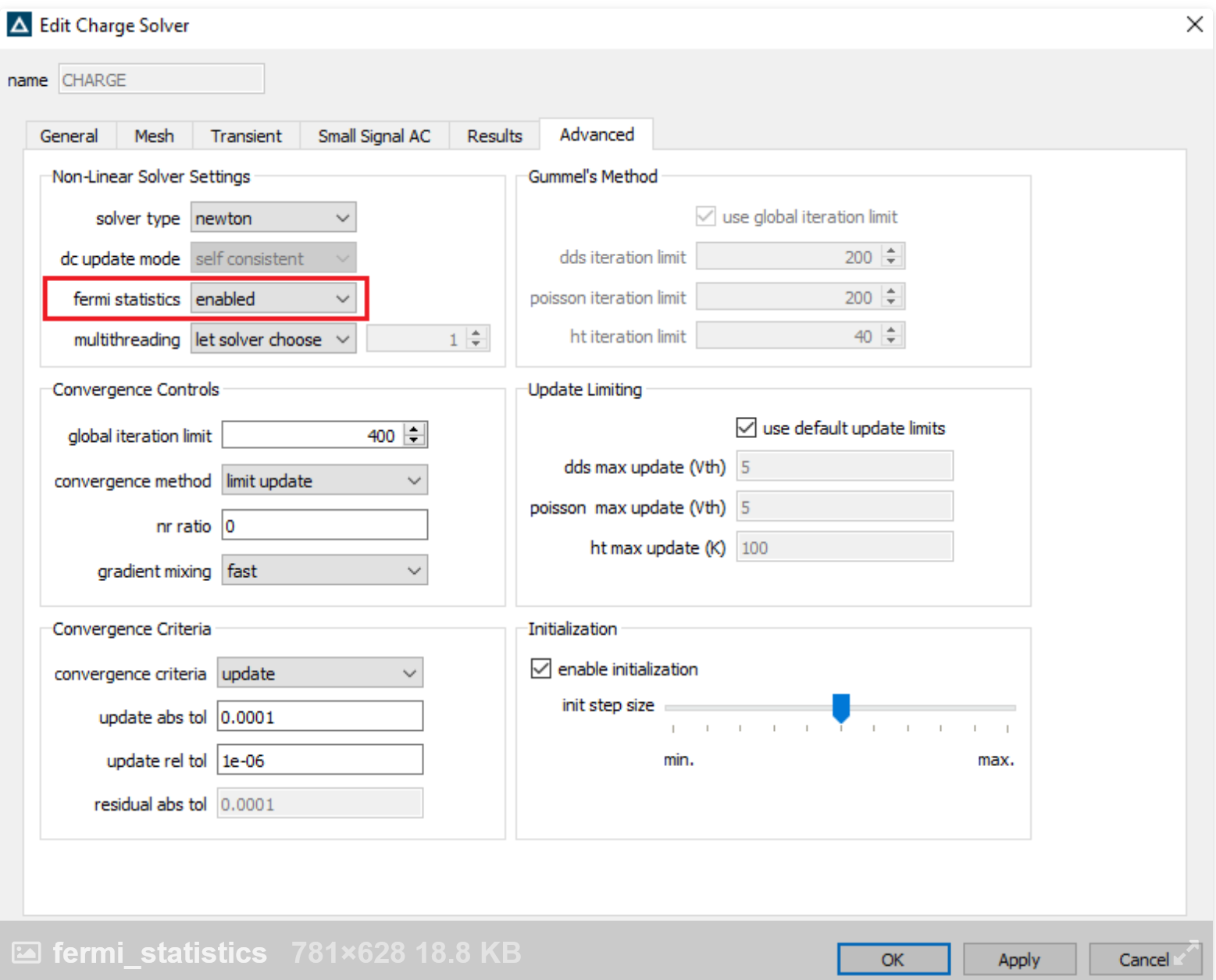-
-
May 11, 2021 at 10:58 pm
Guilin Sun
Ansys Employee发散常见的错误信息是: The program terminated due to an error: Initialization failed to converge charge update due to numerical failure. For instructions on how to troubleshoot this issue, please refer to this: (Troubleshooting convergence issues) 个别版本此链接不工作。 Error: there was an unknown parallel error. The error code is 9010, the process number is 0 通常与材料特性、网格尺寸与质量、算法等有关。请参见这两个帖子: Ansys Insight: CHARGE电学仿真常见问题解决方案集锦 Ansys Insight: CHARGE电学仿真文件添加新材料的常见问题电场 在局部电场较强,或者电场梯度较大的地方,可能需要较细的网格。高功率 当有光吸收时,请检查所设置的光功率不要特别大,要知道DEVICE很小,可能不能承受很强的光功率;电压步长 当电压比较小时没有问题,电压高时发散,一般是电压步长太高了,这个情况在仿真雪崩现象时可能更常见。此时需要分几个电压段仿真,后面的文件电压步长变小,并以前面仿真的结果作为初始文件Load上来。用2D检查 如果3D发散,仿真时间长,不容易找出原因,可以先用2D做个截面上的仿真,这样仿真快,可以帮助尽快找出问题。当然,有时2D没有问题,3D有问题也是可能的。掺杂 有的时候给出的参杂浓度太高了,建议CHARGE用户有Cleanroom的实战经验,设置一些参数时会有一定根据。fermi statistics 在一些情况下,特别是高参杂情况下,波尔茨曼统计可能不适用,此时要用费米统计
-
Viewing 0 reply threads
- The topic ‘Ansys Insight: CHARGE电学仿真发散的常见原因’ is closed to new replies.
Ansys Innovation Space


Trending discussions


Top Contributors


-
3019
-
971
-
857
-
777
-
772
Top Rated Tags


© 2025 Copyright ANSYS, Inc. All rights reserved.
Ansys does not support the usage of unauthorized Ansys software. Please visit www.ansys.com to obtain an official distribution.








